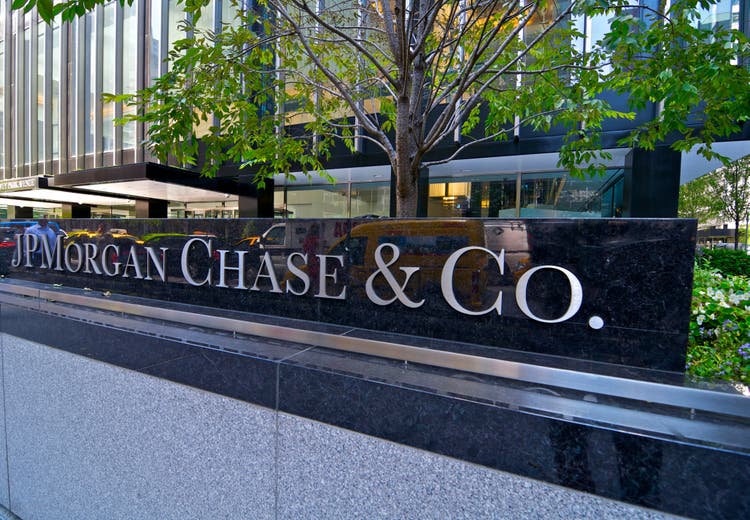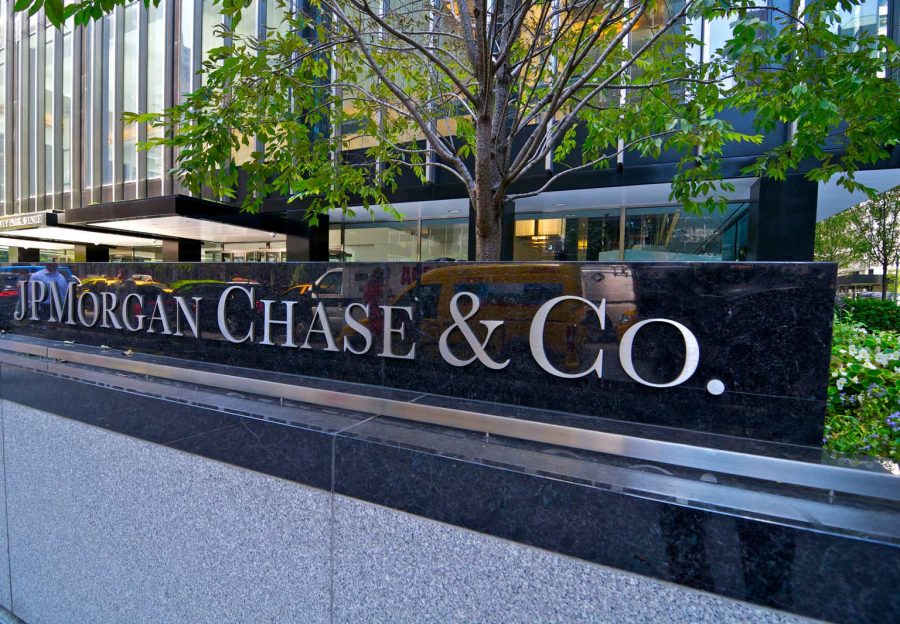Summary:
- JPMorgan Chase & Co. produced strong ROE and ROTCE of 19% and 16% in Q3 2024, despite a slight decline from Q3 2023.
- Wells Fargo also maintained double-digit ROE and ROTCE numbers, though not as high as JPMorgan Chase.
- Early Q3 earnings reports suggest continued economic growth, with Jamie Dimon highlighting strong business and financial results.
- CEO Charles Scharf at Wells Fargo seems to concur.
- These big bands seem to be doing well and seem to indicate that the economy is doing well at this time.
JayLazarin
JPMorgan Chase & Co. (NYSE:JPM) produced a return on tangible common equity of 19 percent in the third quarter of 2024 and a 16 percent return on common equity in the same quarter.
This was done slightly from 22 percent and 18 percent, respectively, from the third quarter of 2023.
But, 2024 has not been all down as JPMorgan Chase & Co. had returns of 28 percent and 23 percent, respectively, in the second quarter of 2024.
Telis Demos, writing in the Wall Street Journal, suggests that the early third-quarter earnings reports indicate that the economy is not slowing at all, but is just continuing to grow.
Yes, there are some concerns here and there, but overall the bank performance for the third quarter of 2024 and for the full year of 2024 so far is not so bad.
Jamie Dimon, Chairman and CEO of the bank, states that “the firm reported strong underlying business and financial results in the third quarter.”
The strong ROE and ROTCE returns speak to the overall performance of the bank.
Overall, Mr. Dimon seems to be feeling pretty good about the performance.
Wells Fargo also kept up double-digit ROE and ROTCE performance, although not quite at the level achieved by JPMorgan Chase.
For the third quarter, Wells Fargo (NYSE:WFC) produced a ROE of 12 percent and a ROTCE of 14 percent. The third quarter results match the second quarter results, but both were down from the third quarter 2023 numbers, which were 13 percent and 16 percent, respectively.
The CEO of Wells Fargo, Charles Scharf commented, “We had solid results in the third quarter with both net income and diluted earnings per share up from the second quarter.”
“The bottom line, double-digit ROEs and ROTCEs are “good stuff.”
Commercial banks do not earn double-digit numbers like these if the economy is not doing well.
JPMorgan Chase on Friday said, “the U.S. economy remains strong for both consumers and big companies….”
And, “the biggest bank in the country continued to earn more than expected on lending in the third quarter and raised forecasts for what it will earn this year….”
Executives said that “consumers continued to spend, and big businesses are confident….”
This is “the kind of economy the Fed had been hoping to engineer.”
Wells Fargo also said its earnings fell in the third quarter, but its profit was still better than had been expected.
One concern that both banks have experienced this year is that their net interest income would decline…the reason being that the Federal Reserve had moved its policy rate of interest down by 50 basis points.
The performance of the banks points to a different picture.
In the case of JPMorgan, the bank actually saw a third-quarter rise in its NII and is now pointing to a further increase in the next year.
Wells Fargo, although presenting the fact that the NII would probably decline in the fourth quarter of 2024, stated that in 2025 the NII for the bank would increase.
One of the problem areas mentioned for both banks is that of commercial real estate loans.
Both banks had provided the market with ample funds in the 2021-2022 period, and some of these were currently having troubles.
But, neither bank seemed to have any major concern about a complete fallout in this area.
Things will work themselves out.
JPMorgan Chief Financial Officer Jeremy Barnum believes that it is time for banks…for people…to stop talking about the pandemic.
People are “rotating” out of that focus.
People are moving on.
The commercial banks need to move on.
JPMorgan, Mr. Barnum argues, “hasn’t seen a weakening in retail spending.”
Mr. Barnum concludes, “So, overall, we see the spending patterns as being sort of solid and consistent with the narrative that the consumer is on solid footing, and consistent with the strong labor market and the current central case of a kind of no-landing scenario economically.”
Overall, JPMorgan Chase & Co. and Wells Fargo seem to be in decent shape and their results seem to support the conclusion that the U.S. economy is in decent shape.
Both banks are earning returns that are in the double digits. This means that both banks are covering…and by a pretty good margin…their cost of capital.
And, both banks have very strong leverage ratios.
JPMorgan Chase & Co. has a Basel III common equity Tier 1 Standardized ratio of 15.3 percent and an advanced ratio of 15.5 percent.
Wells Fargo has a Common Equity Tier 1 (CET1) ratio of 11.3 percent.
Neither bank mentions its cash assets position, but one can guess that each bank holds plenty of cash given the statistics we see presented by the Federal Reserve data. Remember that cash assets in the commercial banking system total around $3.3 trillion.
With JPMorgan being the largest commercial bank in the system and with Wells Fargo following it up closely, one can only conclude that each bank has a massive amount of cash assets on hand.
Overall, these commercial banks are in very good shape, and they are both earning double-digit returns on their capital. Furthermore, the banks are very well capitalized.
This is a good start to the bank’s earning season.
Analyst’s Disclosure: I/we have no stock, option or similar derivative position in any of the companies mentioned, and no plans to initiate any such positions within the next 72 hours. I wrote this article myself, and it expresses my own opinions. I am not receiving compensation for it (other than from Seeking Alpha). I have no business relationship with any company whose stock is mentioned in this article.
Seeking Alpha’s Disclosure: Past performance is no guarantee of future results. No recommendation or advice is being given as to whether any investment is suitable for a particular investor. Any views or opinions expressed above may not reflect those of Seeking Alpha as a whole. Seeking Alpha is not a licensed securities dealer, broker or US investment adviser or investment bank. Our analysts are third party authors that include both professional investors and individual investors who may not be licensed or certified by any institute or regulatory body.
